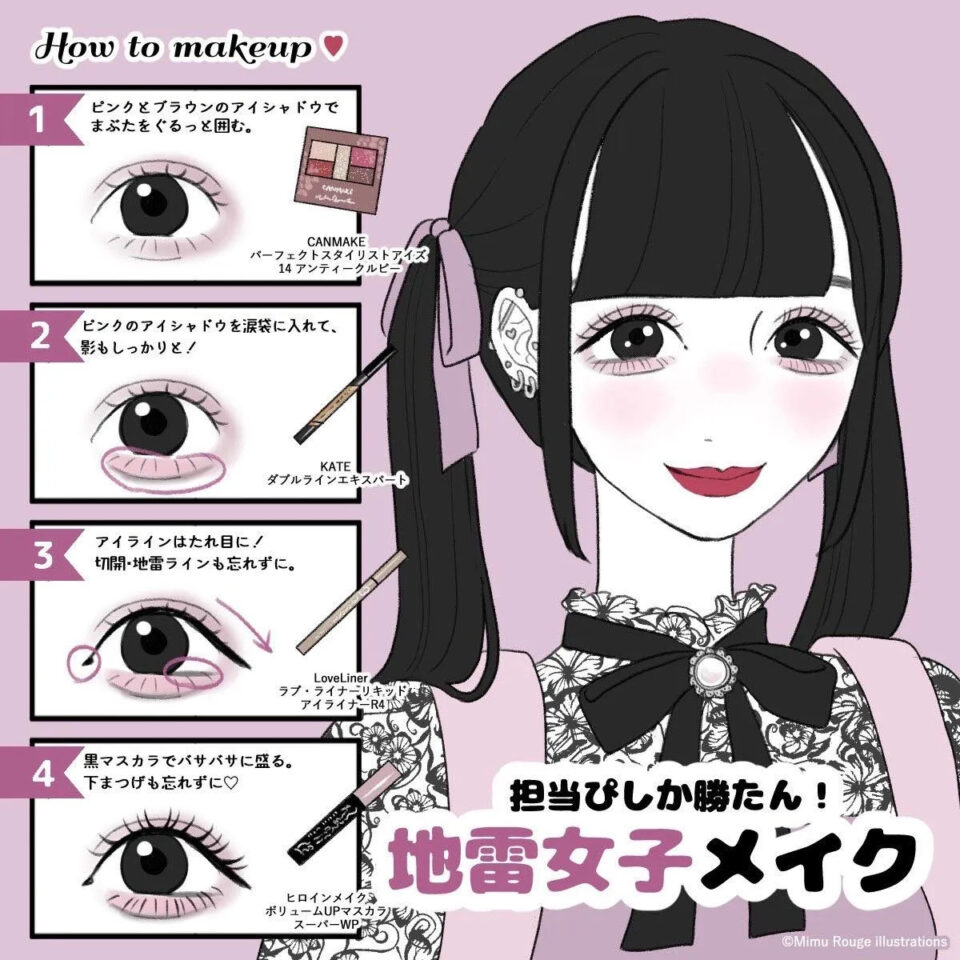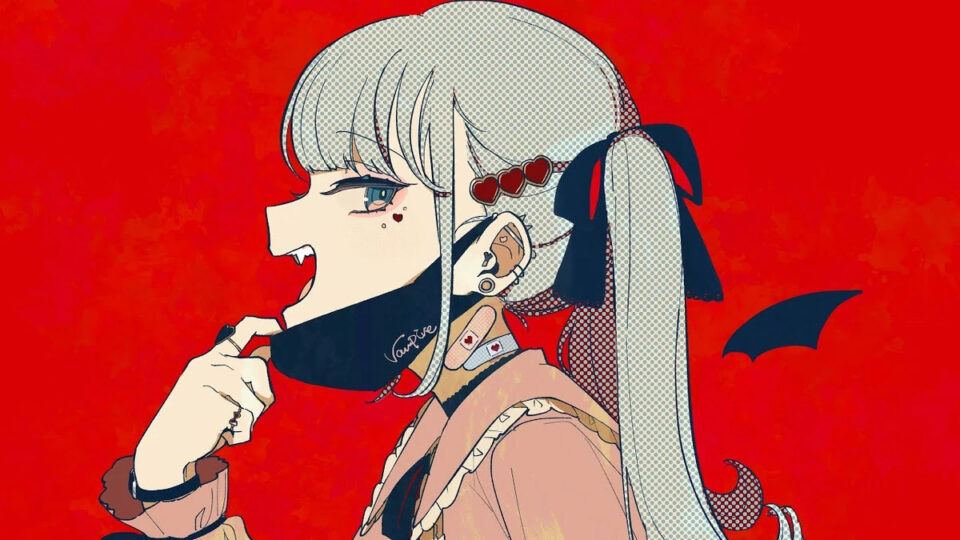Jirai Kei: Those Exploding Landmine Girls
A peep into the latest dark subculture that’s taking the alternate fashion world by storm

Jirai Kei fashion is seen in Yua Takahashi's character (portrayed by Nagisa Saito, left) from the drama 'Ashita, Watashi wa Dareka no Kanojo,' which is adapted from the manga (right).
When one looks at Japanese subcultures and alt-fashion, Tokyo’s Harajuku stands at the center point of it all.
With its crowded and colorful streets densely packed with shops catering to alt fashionistas- from the gothic lolitas to the decoras to the gyarus to the fairy kei to the sweet lolitas…the list goes on. However, the newest subculture that’s fast occupying the mind space of alt aficionados surprisingly isn’t from Harajuku. It is called Jirai Kei.
The Jirai Kei cultural movement was born in Kabukichō, Shinjuku’s entertainment district infamous for its nightlife. Although nowadays, the locality is more of a tourist trap with the iconic Godzilla towering over the populace, it still has a dark underbelly despite its gentrification. Even now Kabukichō is well known for its love hotels, host clubs and concept cafes.
Peel away a little of this glittery façade (in fact, just behind Toho Cinemas past the Godzilla), and you find the ‘Toyoko kids’, young runaways upwards of the age of 13. For some, it is the oppressive atmosphere or abuse at work, school, or even at home; for others, it may be neglect or a sense of un-belonging that brings them here.
When the pandemic hit in 2020 and the world shut down, Kabukichō remained open. With its neon-lit avenues functioning as a beacon, all the runaways were naturally drawn there like moths to a flame. And so Kabukichō became a haven for the lost, the lonely and soon-to-be landmines. The term Jirai Kei translates into ‘landmine type.’
These runaways find artificial love and validation in Kabukichō’s host clubs. This does a number on their emotional and mental stability over and above the trauma and emotional baggage they are already carrying, leading them to explode. It also manifests as self-harm, substance abuse, obsession and hyperfixation, all commonly associated with the fragile mental state of the Jirai community.
Just like how one can set off a landmine by stepping on it, these girls (or boys) are easily triggered and given to explosive outbursts. Hence the term landmine type/jirai kei.
The purpose of the Jirai aesthetic is to convey the melancholic and emotional turmoil of the members of the community. It is about finding the right balance on the knife’s edge between innocence and despair. It incorporates the use of soft pastel colors like pink, lilac, periwinkle or white with darker colors like black, violet and red. Feminine aesthetics like twin tail hair with ribbons paired with more punk aesthetics such as piercings.
The Jirai Kei style encompasses an umbrella of substyles. While the main Jirai Kei style comprises frills, high-waisted skirts and puff-sleeved blouses or dresses, there are offshoots that are quite different. For the more punk, or tomboyish look, there is the ‘subcul Jirai’ characterized by oversized tops and baggy socks/legwarmers. For the boys there is the ‘Jirai Danshi’, which is again a version of subcul Jirai. They also wear oversized shirts, baggy trousers, jackets and arm warmers in a Jirai Kei color palette.

Whatever the substyle, the most important component of Jirai Kei is the makeup. Jirai Kei seeks to portray the melancholy and the sense of sadness that haunts the individual.
The inspiration and basis for this makeup lies in the pleading eye emoji or ‘pien’ ぴえん. The ‘jirai line’ is drawn under the eye to mimic a tear-streaked appearance. It is essentially just a line drawn with red eyeliner to make the eyes look puffy as though one has been crying for hours on end. Circle lenses are used to make the eyes look larger, doll-like and innocent.
Accessories also play a large role in tying the look together. Bows and ribbons, a lot of silver jewelry and Vivienne Westwood necklaces. There is also the pink MCM bag that seems staple for the majority of the Jirai girls. A lot of Sanrio merchandise (with the impish rabbit Kuromi wearing her skull-adorned jester hat) that amps up the ‘kawaii’ factor is a must.

Since hyper fixation is one of the key facets of Jirai culture, ita bags are another popular accessory. These are bags with a clear plastic opening used to showcase charms and pins and are often dedicated to the object of the owner’s affection. Ita bags aren’t exclusive to the Jirai subculture, however. Badges, polaroid shots and small plush toys decorate these bags, proudly displaying the level of obsession and dedication that one has towards an idol or a character one likes.
The Jirai Kei movement was further catapulted into popularity via representations in various forms of media. J-pop idol girl group =Love’s music video for the song “しゅきぴ (Shukipi)” featured the girls wearing Jirai Kei fashion, which gained a lot of traction with their fanbase.
One of =Love’s members, Nagisa Saitō, went on to play the poster girl of the Jirai Kei culture — Yua Takahashi in the drama Ashita, Watashi wa Dareka no Kanojo. The drama is based on the popular manga with the same name which provides a realistic portrayal of the darker side of Shinjuku’s nightlife. The character Yua struck a chord with many of the girls who’ve faced similar hardships. Yua also opened the door to the world of jirai kei to a global audience.
Vocaloid producer DECO*27 ‘s song “The Vampire” featuring Hatsune Miku has the Vocaloid clad head to toe in Jirai fashion. There was even a figure release of Miku in the same outfit that was popular among both her fanbase and people getting into Jirai Kei.

In video games, there’s the character of Ame a Jirai Kei girl from Needy Streamer Overload. The game follows the day-to-day life of Ame and her internet-streaming persona OMGkawaiiangel. The player takes on the role of Ame’s significant other/producer and has to manage her life and make sure she doesn’t spiral out of control. The game does a good job of portraying how easy it is for a person to really be pushed over the edge. Through Ame, one can see how isolating and lonely life can be and the dangers that plague a vulnerable young girl with an impressionable mind.

Fair warning if one plans to check out the aforementioned manga or video game, it isn’t exactly for the fainthearted. There’s a plethora of triggering subjects that range from self-harm to substance abuse that are featured in both.
Though the Jirai Kei culture has darker, more adult origins, not everyone who wears Jirai Kei subscribes to the lifestyle. The pandemic fueled the subculture, but now it has spread all over Japan, even the western world and majority aren’t what the stereotypes portray them to be.
Jirai Kei straddles a space between Harajuku fashion and popular alt-fashion. It is simultaneously hyper-feminine without being cutesy, taking inspiration from punk and goth styles.
“I feel like the Jirai Kei fashion itself is quite easy to get into,” says Yuri Shiro (name changed on request) a Japanese tech professional living in London. Occasionally dabbling in Jirai Kei fashion, she reasons, “A lot of popular songs feature this kind of style. I think the fashion itself is super cute and the color pink x black is perfect! Jirai Kei, the name itself does mean ‘landmine type girl’ which does imply menhera/yandere (mentally unstable) aspects of girls when they are dating. But I feel nowadays it’s popular as a fashion itself. I do feel like doing the Jirai Kei makeup is important to get the whole look.”

Tokyo’s Shibuya 109 which is a shopper’s paradise is full of Jirai Kei styles. A far younger audience is now exposed to the lifestyle and is drawn in solely for the aesthetic. The fashion is now readily available to be purchased anywhere. The age-old question of whether the fashion and the lifestyle need to be separated arises once again.
Jirai Kei started off as a more adult subculture and will always be a more adult subculture. A lot of negative connotations such as binge drinking, compensated dating, self-harm are strongly attached to it. Would embracing the fashion mean embracing the darker side of Jirai Kei? In the age of social media, there are already people mimicking the lifestyle, posing with Strong Zero (an alcoholic beverage) and adopting the attitude of a Jirai Kei girl because it is fashionable to be seen doing so. The ‘kawaii’ (cute) factor plays a major role here but there are lines on the sand.
With the globalization of the community, there are arguments to distance the fashion from the problematic lifestyle to take away the stigma attached to Jirai Kei, to reclaim it and rebrand it as a more positive subculture. But is it truly alright to cut off what makes Jirai Kei, truly Jirai Kei?
Members of music-based subcultures like the goths have rightfully argued that what makes a goth ‘goth’ is the love of the music rather than the aesthetic. Similarly, if you take away everything that shaped Jirai Kei into what it is today is it even Jirai Kei anymore?
That is a landmine that no one wants to step on.







